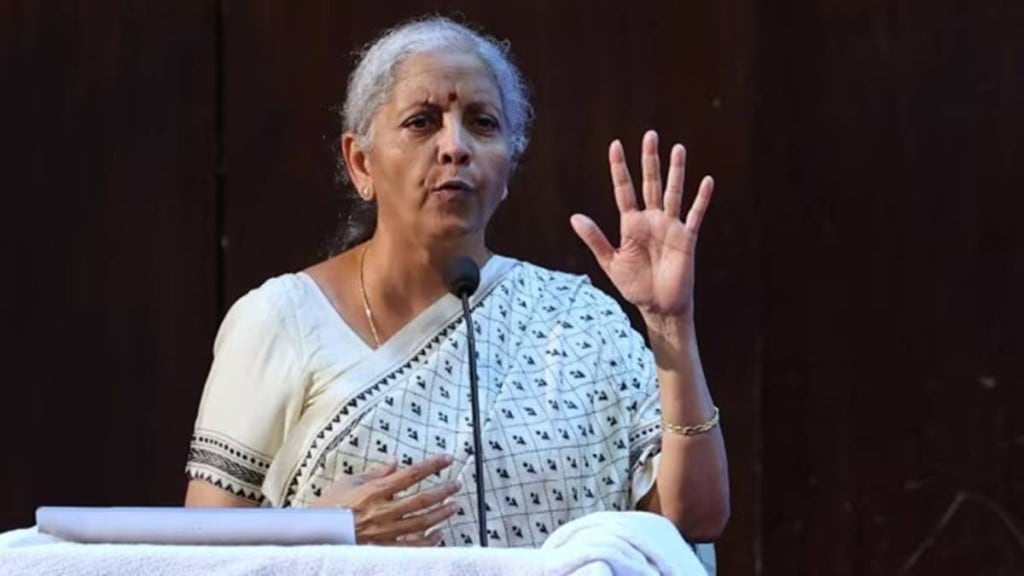The fear that privatisation of banks would undermine financial inclusion is misplaced as professional and board-driven banks serve both national and banking interests effectively, finance minister Nirmala Sitharaman said on Tuesday.
Speaking at the Delhi School of Economics here, Sitharaman also exuded confidence that the Centre will meet its fiscal deficit target of 4.4% of GDP in FY26, sticking to the laid-out fiscal consolidation glide path. After income tax and Goods and Service Tax reforms, she said, the government’s next goal is to create a new-generation customs tariffs structure.
During an interaction with students, she said, even 50 years after bank nationalisation, financial inclusion fell short of the desired level. Of course, public sector banks did achieve tasks assigned to them on priority sector lending and taking government programmes to far-flung areas.
“But in the name of financial inclusion, keeping banks under government control, and not allowing them to professionalise themselves, meant that the government had to infuse capital every now and then,” Sitharaman said, responding to a question about how bank privatisation will be managed without compromising goals on financial inclusion and greater penetration in rural areas.
“So, this perception that when you try to bring in banks to become professional, and if you want to privatise them, which is a Cabinet decision, that the objective of reaching to all people, taking banking to everybody, will be lost, is incorrect.”
Even though she did not mention any particular bank, the government is currently in the process of a strategic sale of IDBI Bank in which the Centre and public sector life insurer LIC hold the majority stake.
The financial inclusion objectives, which were not achieved in 50 years after nationalisation, are being “beautifully achieved” now, she said.
In the last budget, the government has rationalised basic customs duty rates, slashing the number of levies to just 8, but has kept the effective duty rates on most items the same by adjusting cess to further ease of doing business (EODB). With this, average customs duty rate has been reduced to 10.65% from 11.65%.
However, lower duties on inputs by India’s competitors give their producers a cost edge. India imposes 10% tariffs on key footwear inputs, while Vietnam and Italy levy near-zero rates, Niti Aayog said in a report, recommending tariff cuts to boost competitiveness.
Currently, India is in talks with the US and the EU for free trade deals, which may lead to lowering of tariffs on a large number of items, under preferential mode.
Talking about the government finances, the minister said: “To rebuild buffers and provide requisite space for growth-enhancing expenditures, the Centre unveiled a new medium-term fiscal consolidation plan centred around debt-to-GDP ratio reduction to 50% with a tolerance band of +/- 1 percentage points by FY31 with fiscal deficit pegged accordingly each year from FY27.”
She said that to achieve Viksit Bharat by 2047, prudential fiscal management is essential for the Centre and the states.
Highlighting recent reforms like the income tax relief provided to individuals in this year’s budget, enactment of the new Income Tax Act 2025 and the GST 2.0 reforms unveiled recently, she said the next goal is reforming customs duty structure.
“Immense work is going on, making customs a lot more new generation. Work is going on,” she said.
